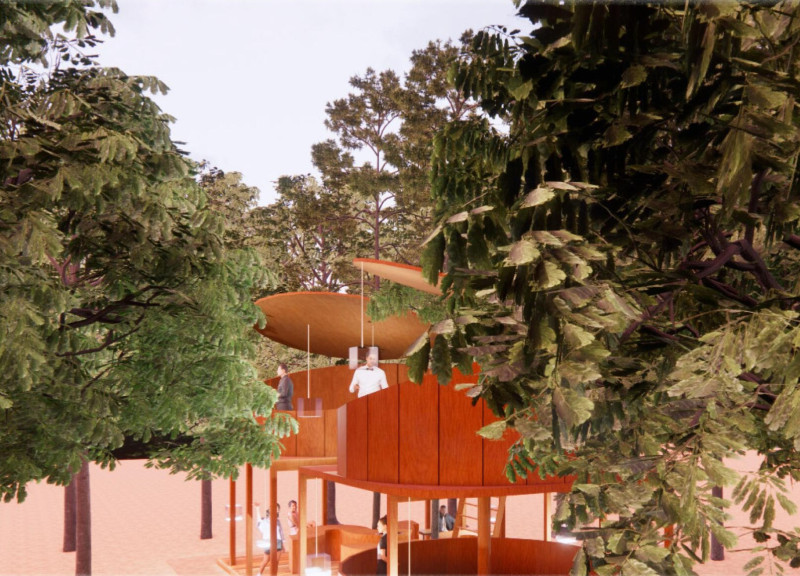5 key facts about this project
The food court at the Sansusi Music Festival occupies an area of 50 m², designed to serve both functionality and community engagement. With 27 m² set aside for workspaces, the design focuses on enhancing the visitor experience while promoting a strong connection to the natural surroundings. The layout aims to integrate seamlessly with the vibrant festival setting, encouraging social interaction among attendees.
Natural Integration
The design incorporates existing trees on the site, which are central to the overall concept. These trees are not only aesthetic features but also play a role in the structure of the food court. The circular layout allows the food court to align with the shape of the main stage of the festival. This relationship creates a visual flow that facilitates easy movement for visitors, encouraging them to explore both dining and entertainment areas.
Flexible Arrangements
Furniture arrangements within the food court are designed to be adaptable. The tables have a curvilinear form that allows customers to adjust seating based on their needs. This flexibility fosters a welcoming and social atmosphere, inviting groups of various sizes to dine together. Visitors can arrange themselves in ways that create a sense of community while enjoying the festival's lively environment.
Functional Design
The building features two levels, with a ground floor offering a dining area and a booth for interaction with the chef. The second level serves as the cooking area, where food is prepared away from diners. A pulley system transports dishes from the kitchen to guests, streamlining service and maintaining a quieter dining space. This thoughtful layout optimizes the guest experience while ensuring operational efficiency for food service.
Sustainable Practices
Sustainability is an essential aspect of the design, with careful consideration given to materials and practices. Waterproof and insulated materials enhance safety and comfort in the cooking areas. The elimination of open flames in favor of electric cooking methods aligns with modern safety standards. Additionally, take-out windows increase accessibility, providing an option for guests to enjoy food without entering the main dining space.
The design reflects a commitment to ecological responsibility. It encourages the use of locally sourced organic food, supporting community agriculture and reducing transportation impacts. The overall aesthetic echoes the natural environment, contributing to a vibrant atmosphere where attendees can truly connect with both nature and the festival experience, framed by the trees that shape the surroundings.






















































